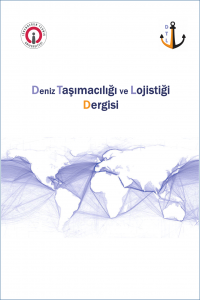Dizel Motorlarda Bütanol-Dizel Yakıt Karışımı Kullanılmasının Çevrimsel Farklara Etkisinin Araştırılması
Bu çalışmada dizel motorlarında bütanol-dizel yakıt karşımı kullanılmasının çevrimsel farklara etkisi incelenmiştir. Motor performansını ve egzoz emisyonlarını olumsuz yönde etkileyen çevrimsel farklılık, hem maksimum silindir basıncı hem de ortalama indike basınç parametreleri yardımıyla hesaplanarak karşılaştırmalar yapılmıştır. Deneysel çalışmalar için tek silindirli, hava soğutmalı ve dört zamanlı bir dizel motoru kullanılmış ve saf dizel yakıtına hacimce %3, %9 ve %15 olmak üzere üç farklı oranda bütanol eklenerek ardışık 100 çevrim analiz edilmiştir. Çalışma sonunda dizel yakıtına bütanol eklenmesinin çevrimsel farkları arttırdığı görülmüştür. Ayrıca iki farklı basınç parametresi kullanılarak hesaplanan sonuçların birbiri ile uyumlu olduğu görülmüştür. Saf dizel yakıtı için COVPmax değeri % 0.78 olarak hesaplanmış bu değer B15 yakıtı için % 0.85’e çıkmıştır. COVPmi değeri saf dizel yakıtı için % 1.14 olarak hesaplanırken B15 yakıtı için bu değer % 1.49’a yükselmiştir
Anahtar Kelimeler:
Dizel motor, Çevrimsel farklar, Bütanol-dizel yakıt karışımı
Investigation of the Effect oInvestigation of the Effect of Using Butanol-Diesel Fuel Blends on Cyclic Variability in Diesel Enginesf Using Butanol-Diesel Fuel Blends on Cyclic Variability in Diesel Engines
In this study, the effect of using butanol-diesel fuel blend on cyclic variability in diesel engines was investigated. The cyclic variability, which adversely affects engine performance and exhaust emissions, was calculated with the help of both maximum cylinder pressure and mean indicated pressure parameters and comparisons were carried out. For the experimental studies, a single cylinder, air-cooled, four-stroke diesel engine was used, and three different proportions of butanol (3%, 9% and 15% by volume) were added to pure diesel fuel and 100 consecutive cycles were analyzed. At the end of the study, it was seen that the cyclic variability of adding butanol to diesel fuel increased. In addition, the results calculated using two different pressure parameters were found to be compatible with each other. COVPmax value was calculated as 0.78% for pure diesel fuel, and this value increased to 0.85% for B15 fuel. While the COVPmi value was calculated as 1.14% for pure diesel fuel, this value increased to 1.49% for B15 fuel.
Keywords:
Diesel Engine, Cyclic Variability, Butanol-diesel fuel blend,
___
- Bekal, S., ve Babu, T. A. (2011). An Analysis of Cycle-by-cycle Fluctuation in Combustion Parameter in CI Engine Operation for Various Bio-fuels. Energy Sources, Part A: Recovery, Utilization, and Environmental Effects, 33(19), 1792-1801. https://doi.org/10.1080/15567030903419422
- Bittle, J., Knight, B., & Jacobs, T. (2010). Biodiesel effects on cycle-to-cycle variability of combustion characteristics in a common-rail medium-duty diesel engine. SAE, (2010-01-0867). https://doi.org/10.4271/2010-01-0867
- Ceviz, M., Koncuk, F., Küçük, Ö., Gören, A., & Yüksel, F. (2011). Analysis of Combustion Stability and Its Relation to Performance Characteristics in a Compression Ignition Engine Fueled with Diesel-biodiesel Blends. Energy Sources, Part A: Recovery, Utilization, and Environmental Effects, 33(10), 990-1003. https://doi.org/10.1080/15567030903261790
- Gürgen, S., Ünver, B., & Altın, İ. (2017). Experimental investigation on cyclic variability, engine performance, and exhaust emissions in a diesel engine using alcohol-diesel fuel blends. Thermal Science, 21(1), 581-589. https://doi.org/10.2298/TSCI161020306G
- Gürgen, S., Ünver, B., & Altın, İ. (2018). Prediction of cyclic variability in a diesel engine fueled with n-butanol and diesel fuel blends using artificial neural network. Renewable Energy, 117, 538-544. https://doi.org/10.1016/j.renene.2017.10.101
- Heywood, J. B. (1988). Internal combustion engine fundamentals (Vol. 930): Mcgraw-hill New York.
- Mei, D., Wu, H., Ren, H., Hielscher, K., & Baar, R. (2014). Combustion Cycle-by-Cycle Variations in a Common Rail Direct Injection Engine Fueled with Dimethyl Carbonate–Diesel Blend. Journal of Energy Engineering, 04014059.
- Rakopoulos, C. D., Rakopoulos, D. C., Kosmadakis, G. M., & Papagiannakis, R. G. (2019). Experimental comparative assessment of butanol or ethanol diesel-fuel extenders impact on combustion features, cyclic irregularity, and regulated emissions balance in heavy-duty diesel engine. Energy, 174, 1145-1157. https://doi.org/10.1016/j.energy.2019.03.063
- Rakopoulos, D., Rakopoulos, C., Giakoumis, E., Papagiannakis, R., & Kyritsis, D. (2008). Experimental-stochastic investigation of the combustion cyclic variability in HSDI diesel engine using ethanol–diesel fuel blends. Fuel, 87(8), 1478-1491. https://doi.org/10.1016/j.fuel.2007.08.012
- Rakopoulos, D., Rakopoulos, C., Hountalas, D., Kakaras, E., Giakoumis, E., & Papagiannakis, R. (2010). Investigation of the performance and emissions of bus engine operating on butanol/diesel fuel blends. Fuel, 89(10), 2781-2790. https://doi.org/10.1016/j.fuel.2010.03.047
- Rakopoulos, D., Rakopoulos, C., Papagiannakis, R., & Kyritsis, D. (2011). Combustion heat release analysis of ethanol or n-butanol diesel fuel blends in heavy-duty DI diesel engine. Fuel, 90(5), 1855-1867. https://doi.org/10.1016/j.fuel.2010.12.003
- Rakopoulos, D. C., Rakopoulos, C. D., Giakoumis, E. G., Dimaratos, A. M., & Kyritsis, D. C. (2010). Effects of butanol–diesel fuel blends on the performance and emissions of a high-speed DI diesel engine. Energy Conversion and Management, 51(10), 1989-1997. https://doi.org/10.1016/j.enconman.2010.02.032
- Selim, M. Y. (2005). Effect of engine parameters and gaseous fuel type on the cyclic variability of dual fuel engines. Fuel, 84(7), 961-971. https://doi.org/10.1016/j.fuel.2004.11.023
- Şahin, Z., & Aksu, O. N. (2015). Experimental investigation of the effects of using low ratio n-butanol/diesel fuel blends on engine performance and exhaust emissions in a turbocharged DI diesel engine. Renewable Energy, 77, 279-290. https://doi.org/10.1016/j.renene.2014.11.093
- Tang, D., Ge, J., Duan, R., & Zhang, Y. (2011). Investigation on the combustion cyclic variability in a non-road diesel engine fuelled with diesel/bio-diesel blends. Paper presented at the Electric Information and Control Engineering (ICEICE), 2011 International Conference on.
- Yang, Z., Steffen, T., & Stobart, R. (2013). Disturbance sources in the diesel engine combustion process. SAE, (0148-7191). https://doi.org/10.4271/2013-01-0318
- Yayın Aralığı: Yılda 2 Sayı
- Yayıncı: İskenderun Teknik Üniversitesi
Sayıdaki Diğer Makaleler
Dökme Yük Gemilerinde Güç Kalitesi Problemlerinin Simulink ile Modellenmesi
İsmail Nuri BERTİZLİOĞLU, Seçil GÜLMEZ
Bir yakınlık diyagramı ile İspanyol liman sisteminin dijitalleşmesini geliştirmek için bir çalışma
Nicoleta GONZÁLEZ-CANCELAS, Beatriz MOLİNA, Francisco SOLER-FLORES
